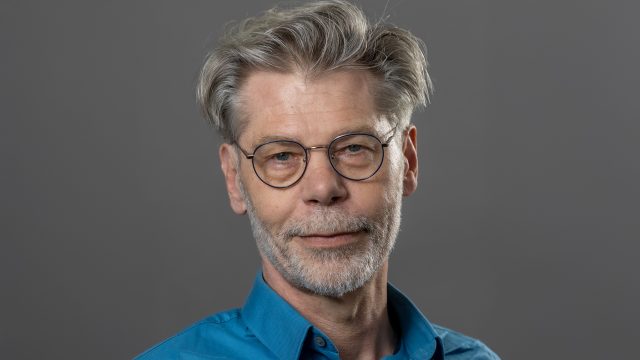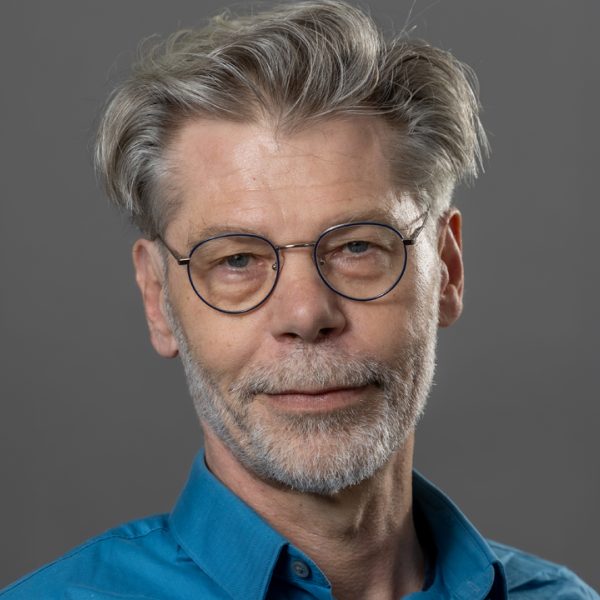
Our Focus
We define and dissect the molecular circuits of the DNA damage response (DDR) to identify molecular targets for designing novel mechanism-based anti-cancer interventions.
We address fundamental mechanistic aspects of the DDR with special attention to homologous recombination, DNA mismatch repair and DNA replication stress. We study the dynamic molecular interactions that are responsible for the assembly and disassembly of the molecular factories that guard and repair the genome both at the biochemical and cellular level.
Our translational research involves proton therapy and cancer-on-chip studies. We are characterizing the proton DNA damage response and testing hypotheses on combination therapies. Our cancer-on-chip studies are aimed at making chips compatible with optical imaging such that functional probes, for biological pathways, can be imaged in ex vivo tumour slices from patients.
About Roland Kanaar
My Research
Roland Kanaar studied chemistry at Leiden University. He performed his PhD research (1984-1988) in the lab of Piet van de Putte on the mechanism of site-specific DNA recombination. His post-doctoral work at the University of California, Berkeley, with Nick Cozzarelli and Don Rio aimed at understanding the molecular mechanisms of homologous DNA recombination and RNA splicing, respectively. In 1995 he moved to the Erasmus University Medical Center to become professor of Molecular Genetics in 2000.
His current research addresses the mechanisms and biological relevance of the DNA damage response (DDR). Defects in the DDR lead to the accumulation of DNA lesions and mutations, which causes hereditary diseases, cancer, cell decay and aging. A central theme in the lab concerns the mechanisms of DNA double-strand break metabolism.
A breakthrough discovery was the revelation that homologous recombination in mammalian organisms contributes to repair of ionizing radiation-induced DNA double-strands. This was contrary to the existing dogma, which held that in mammals DNA double strand breaks were repaired almost exclusively by non-homologous DNA end-joining. Importantly, using mouse reverse genetics his team demonstrated that homologous recombination and non-homologous DNA end-joining pathway have overlapping, as well as specialized roles. Furthermore, his team discovered that hyperthermia augments DNA damage based anti-cancer treatments by degrading BRCA2, a mechanistic insight with direct clinical implications.
Awards
2013: Elected member of the KNAW (Royal Netherlands Academy of Arts and Sciences)
2012: Cozzarelli Prize, National Academy of Sciences, USA
2002: Elected member of EMBO
Key Publications
Modesti, M., Budzowska, M., Baldeyron, C., Demmers, J. A., Ghirlando, R., & Kanaar, R. (2007). RAD51AP1 is a structure-specific DNA binding protein that stimulates joint molecule formation during RAD51-mediated homologous recombination. Molecular cell, 28(3), 468-481.
Kanaar, R., & Wyman, C. (2008). DNA repair by the MRN complex: break it to make it. Cell, 135(1), 14-16.
Agarwal, S., van Cappellen, W. A., Guénolé, A., Eppink, B., Linsen, S. E., Meijering, E., ... & Essers, J. (2011). ATP-dependent and independent functions of Rad54 in genome maintenance. The Journal of cell biology, 192(5), 735-750.
Krawczyk, P. M., Eppink, B., Essers, J., Stap, J., Rodermond, H., Odijk, H., ... & Soullié, T. (2011). Mild hyperthermia inhibits homologous recombination, induces BRCA2 degradation, and sensitizes cancer cells to poly (ADP-ribose) polymerase-1 inhibition. Proceedings of the National Academy of Sciences, 108(24), 9851-9856.
Tham, K. C., Hermans, N., Winterwerp, H. H., Cox, M. M., Wyman, C., Kanaar, R., & Lebbink, J. H. (2013). Mismatch repair inhibits homeologous recombination via coordinated directional unwinding of trapped DNA structures. Molecular cell, 51(3), 326-337.
Zelensky, A. N., Schimmel, J., Kool, H., Kanaar, R., & Tijsterman, M. (2017). Inactivation of Pol θ and C-NHEJ eliminates off-target integration of exogenous DNA. Nature communications, 8(1), 66.
Members
| Roland Kanaar Group leader | Alex Zelensky Assistant Professor | Arnab Ray Chaudhuri Associate Professor |
| Charlie Laffeber Technician | Dik van Gent Senior Investigator | Joyce Lebbink Associate professor |
| Julie Nonnekens Assistant Professor | Kelly de Koning Technician | Maayke Kuijten Postdoc fellow |
| Nina Becx PhD student | Raviprasad Kuthethur Vittala Das PostDoc | Romano van Genderen PhD student |
| Sari van Rossum Fikkert Research technician | Tim Heemskerk PhD student | |
